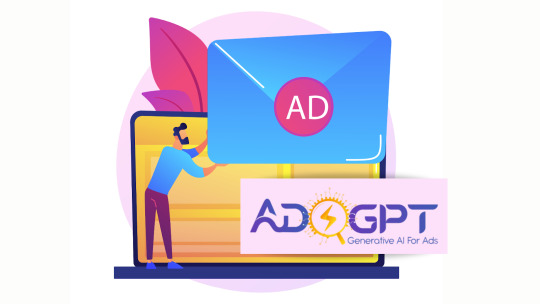#Data driven testing framework
Explore tagged Tumblr posts
Text










Collective memories
You may have come across Semioticapocalypse, a blog I started—frightening to consider how long ago it was, — that became essentially the origin of the «Collective Memories» (CM). Both Semioticapocalypse and the CM project emerged primarily from my longstanding love for black-and-white photography, which later evolved into an interest in its history and theory. Secondly, thу new enterprise owes much to the staggering and mesmerizing impact that the Cambrian explosion in the world of generative models has had (and continues to have) on me, particularly when it comes to diffusion models, generating images visual or textual inputs as well as from various combinations of thereof.
The term "collective memory" denotes the aggregate of memories, knowledge, and data that a social group holds, which is intrinsically linked to the group's identity. The term "collective memory" in English and its French counterpart "la mémoire collective" emerged in the latter half of the 19th century. Maurice Halbwachs, a philosopher and sociologist, further developed this concept in his 1925 work, «Les cadres sociaux de la mémoire» (eng. text). Both expansive and intimate social collectives can create, disseminate, and inherit collective memory.
Contrary to the term "collective memory," which is somewhat ambiguously defined yet generally accepted, the notion of "collective memories" is inherently problematic. Memories are the results of the individual acts of recollection, making the idea of "collective memories" paradoxical. Сontemporary diffusion models utilize vast amounts of often unidentified data, including historical and personal old photographs, vintage postcards, and other kinds of publicly circulating images. These models may be seen as involved in the prompts-driven singular acts of remembrance, producing images that paradoxically represent "collective memories," something otherwise unfeasible and ultimately, non-existent.
The visual works published here and elsewhere on this blog were created using Midjourney. Each of them comes as the result of finding optimal (for lack of a better world) combined text/image prompt through exhaustive search a. k. a. generate-and-test method; the process is apparently as labor-intensive as it is time-consuming. The major part of the works belongs within the "Collective Memories" framework. In addition to visuals there will be eventually / hopefully a p2p publication or two.
Past works that align with the CM project in terms of both concept and style, even if not published as such, can be found on Behance. Then there's Instagram (crowв there is kind of thin but I'm set on daily updates). Last but not least, there are sporadic posts on Facebook, in designated groups only, — primarily 'MJ Official' (weekly or so) and another nice one here (occasionally). In case you would like (for whatever reason) to buy NFT or two, it can be arranged via Makers Place: drop me a line.
#midjourney#ai#ai art#ai generated#generative#generative art#retro style#neurophotography#promptography#disturbing#weird#hybrids#collective memories#memory studies#surreal#public history#vintage style
149 notes
·
View notes
Text
Automakers and tech developers testing and deploying self-driving and advanced driver-assistance features will no longer have to report as much detailed, public crash information to the federal government, according to a new framework released today by the US Department of Transportation.
The moves are a boon for makers of self-driving cars and the wider vehicle technology industry, which has complained that federal crash-reporting requirements are overly burdensome and redundant. But the new rules will limit the information available to those who watchdog and study autonomous vehicles and driver-assistance features—tech developments that are deeply entwined with public safety but which companies often shield from public view because they involve proprietary systems that companies spend billions to develop.
The government's new orders limit “one of the only sources of publicly available data that we have on incidents involving Level 2 systems,” says Sam Abuelsamid, who writes about the self-driving-vehicle industry and is the vice president of marketing at Telemetry, a Michigan research firm, referring to driver-assistance features such as Tesla’s Full Self-Driving (Supervised), General Motors’ Super Cruise, and Ford’s Blue Cruise. These incidents, he notes, are only becoming “more common.”
The new rules allow companies to shield from public view some crash details, including the automation version involved in incidents and the “narratives” around the crashes, on the grounds that such information contains “confidential business information.” Self-driving-vehicle developers, such as Waymo and Zoox, will no longer need to report crashes that include property damage less than $1,000, if the incident doesn’t involve the self-driving car crashing on its own or striking another vehicle or object. (This may nix, for example, federal public reporting on some minor fender-benders in which a Waymo is struck by another car. But companies will still have to report incidents in California, which has more stringent regulations around self-driving.)
And in a change, the makers of advanced driver-assistance features, such as Full Self-Driving, must report crashes only if they result in fatalities, hospitalizations, air bag deployments, or a strike on a "vulnerable road user,” like a pedestrian or cyclist—but no longer have to report the crash if the vehicle involved just needs to be towed.
“This does seem to close the door on a huge number of additional reports,” says William Wallace, who directs safety advocacy for Consumer Reports. “It’s a big carve-out.” The changes move in the opposite direction of what his organization has championed: federal rules that fight against a trend of "significant incident underreporting" among the makers of advanced vehicle tech.
The new DOT framework will also allow automakers to test self-driving technology with more vehicles that don’t meet all federal safety standards under a new exemption process. That process, which is currently used for foreign vehicles imported into the US but is now being expanded to domestically made ones, will include an "iterative review” that "considers the overall safety of the vehicle.” The process can be used to, for example, more quickly approve vehicles that don’t come with steering wheels, brake pedals, rearview mirrors, or other typical safety features that make less sense when cars are driven by computers.
One company in particular emerges as a winner: Elon Musk’s Tesla, which now will be able to curtail public reporting on its Autopilot and Full Self-Driving (Supervised) features, and may enjoy an easier road to federal safety approval for its upcoming Cybercab, a two-seat, purpose-built robotaxi that does not have a steering wheel or brakes.
“The company that probably benefits the most from that is Tesla,” Abuelsamid says. Though the Transportation Department cited safety as the number one motivator behind the new rules, “there’s nothing in these changes that actually prioritizes safety,” he says.
A spokesperson for the National Highway Traffic Safety Administration did not respond to questions about Tesla. Tesla, which disbanded its press team five years ago, did not respond to a request for comment.
In a video message posted to X, DOT secretary Sean Duffy said the new automated vehicle framework aimed to increase commercial deployment of new car technology. “America is in the middle of an innovation race with China, and the stakes couldn’t be higher,” he said.
In a memo, an NHTSA official said the changes were only the first step in an effort to "improve the efficiency and effectiveness” of the process through which new vehicle tech is allowed on roads.
Vehicle industry groups applauded the changes. The Autonomous Vehicle Industry Association, an organization that represents several autonomous vehicle technology companies (though, notably, not Tesla) called the DOT’s announcement a “bold and necessary step in developing a federal policy framework for autonomous vehicles.” John Bozzella, the president and CEO of the Alliance for Automotive Innovation, an automotive trade organization, said the announcement is “a signal that AV policy in America isn’t an afterthought anymore.”
The changes to the program are not as drastic as some safety advocates had feared. Prior to President Donald Trump’s inauguration, Reuters reported that the transition team considered scrapping all government crash-reporting requirements related to self-driving and advanced vehicle technology. Though this week’s changes curtail some of the data released and eliminate some redundancies that made the data more difficult to understand and handle, companies deploying self-driving cars are still required to report crash information to the feds.
Noah Goodall, an independent researcher who studies autonomous vehicles, says the changes may make it harder for outsiders to spot or understand patterns in self-driving vehicles’ mistakes—though also notes the public database on crashes has been difficult to work with since it was launched in 2021. “You’re getting less reporting now,” he says. “From my perspective, more data is good.”
4 notes
·
View notes
Text
Unlocking the Power of Data: Essential Skills to Become a Data Scientist

In today's data-driven world, the demand for skilled data scientists is skyrocketing. These professionals are the key to transforming raw information into actionable insights, driving innovation and shaping business strategies. But what exactly does it take to become a data scientist? It's a multidisciplinary field, requiring a unique blend of technical prowess and analytical thinking. Let's break down the essential skills you'll need to embark on this exciting career path.
1. Strong Mathematical and Statistical Foundation:
At the heart of data science lies a deep understanding of mathematics and statistics. You'll need to grasp concepts like:
Linear Algebra and Calculus: Essential for understanding machine learning algorithms and optimizing models.
Probability and Statistics: Crucial for data analysis, hypothesis testing, and drawing meaningful conclusions from data.
2. Programming Proficiency (Python and/or R):
Data scientists are fluent in at least one, if not both, of the dominant programming languages in the field:
Python: Known for its readability and extensive libraries like Pandas, NumPy, Scikit-learn, and TensorFlow, making it ideal for data manipulation, analysis, and machine learning.
R: Specifically designed for statistical computing and graphics, R offers a rich ecosystem of packages for statistical modeling and visualization.
3. Data Wrangling and Preprocessing Skills:
Raw data is rarely clean and ready for analysis. A significant portion of a data scientist's time is spent on:
Data Cleaning: Handling missing values, outliers, and inconsistencies.
Data Transformation: Reshaping, merging, and aggregating data.
Feature Engineering: Creating new features from existing data to improve model performance.
4. Expertise in Databases and SQL:
Data often resides in databases. Proficiency in SQL (Structured Query Language) is essential for:
Extracting Data: Querying and retrieving data from various database systems.
Data Manipulation: Filtering, joining, and aggregating data within databases.
5. Machine Learning Mastery:
Machine learning is a core component of data science, enabling you to build models that learn from data and make predictions or classifications. Key areas include:
Supervised Learning: Regression, classification algorithms.
Unsupervised Learning: Clustering, dimensionality reduction.
Model Selection and Evaluation: Choosing the right algorithms and assessing their performance.
6. Data Visualization and Communication Skills:
Being able to effectively communicate your findings is just as important as the analysis itself. You'll need to:
Visualize Data: Create compelling charts and graphs to explore patterns and insights using libraries like Matplotlib, Seaborn (Python), or ggplot2 (R).
Tell Data Stories: Present your findings in a clear and concise manner that resonates with both technical and non-technical audiences.
7. Critical Thinking and Problem-Solving Abilities:
Data scientists are essentially problem solvers. You need to be able to:
Define Business Problems: Translate business challenges into data science questions.
Develop Analytical Frameworks: Structure your approach to solve complex problems.
Interpret Results: Draw meaningful conclusions and translate them into actionable recommendations.
8. Domain Knowledge (Optional but Highly Beneficial):
Having expertise in the specific industry or domain you're working in can give you a significant advantage. It helps you understand the context of the data and formulate more relevant questions.
9. Curiosity and a Growth Mindset:
The field of data science is constantly evolving. A genuine curiosity and a willingness to learn new technologies and techniques are crucial for long-term success.
10. Strong Communication and Collaboration Skills:
Data scientists often work in teams and need to collaborate effectively with engineers, business stakeholders, and other experts.
Kickstart Your Data Science Journey with Xaltius Academy's Data Science and AI Program:
Acquiring these skills can seem like a daunting task, but structured learning programs can provide a clear and effective path. Xaltius Academy's Data Science and AI Program is designed to equip you with the essential knowledge and practical experience to become a successful data scientist.
Key benefits of the program:
Comprehensive Curriculum: Covers all the core skills mentioned above, from foundational mathematics to advanced machine learning techniques.
Hands-on Projects: Provides practical experience working with real-world datasets and building a strong portfolio.
Expert Instructors: Learn from industry professionals with years of experience in data science and AI.
Career Support: Offers guidance and resources to help you launch your data science career.
Becoming a data scientist is a rewarding journey that blends technical expertise with analytical thinking. By focusing on developing these key skills and leveraging resources like Xaltius Academy's program, you can position yourself for a successful and impactful career in this in-demand field. The power of data is waiting to be unlocked – are you ready to take the challenge?
3 notes
·
View notes
Text
From Data to Decisions: Leveraging Product Analytics and AI Services for Faster B2B Innovation
In today’s competitive B2B landscape, innovation isn’t just about having a great product idea. It’s about bringing that idea to life faster, smarter, and with precision. That means making every decision based on real data, not guesswork. At Product Siddha, we help businesses unlock faster B2B innovation by combining the power of product analytics and AI services into one seamless strategy.
Why B2B Innovation Fails Without Data-Driven Insight
Most B2B companies struggle to innovate at scale because they lack visibility into what users actually do. Product teams launch features based on assumptions. Marketing teams operate without a feedback loop. Sales teams miss opportunities due to fragmented data. This disconnect creates wasted effort and missed growth.
Product analytics is the solution to this problem. When integrated with AI services, you don’t just track user behavior — you predict it. This lets you make smarter decisions that directly improve your product roadmap, customer experience, and business outcomes.
The Power of Product Analytics in B2B Growth
Product analytics turns user behavior into actionable insight. Instead of relying on vanity metrics, Product Siddha helps you understand how real people interact with your product at every stage. We implement tools that give you a complete view of the user journey — from first touchpoint to long-term retention.
With powerful product analytics, you can:
Identify high-impact features based on real usage
Spot friction points and user drop-offs quickly
Personalize product experiences for higher engagement
Improve onboarding, reduce churn, and boost ROI
This is not just reporting. It’s clarity. It’s control. And it’s the foundation of faster B2B innovation.
Accelerate Outcomes with AI Services That Work for You
While product analytics shows you what’s happening, AI services help you act on that data instantly. Product Siddha designs and builds low-code AI-powered systems that reduce manual work, automate decisions, and create intelligent workflows across teams.
With our AI services, B2B companies can:
Automatically segment users and personalize messaging
Trigger automated campaigns based on user behavior
Streamline product feedback loops
Deliver faster support with AI chatbots and smart routing
Together, AI and analytics make your product smarter and your business more efficient. No more delayed decisions. No more data silos. Just continuous improvement powered by automation.
Our Approach: Build, Learn, Optimize
At Product Siddha, we believe innovation should be fast, measurable, and scalable. That’s why we use a 4-step framework to integrate product analytics and AI services into your workflow.
Build Real, Fast
We help you launch an MVP with just enough features to test real-world usage and start gathering data.
Learn What Matters
We set up product analytics to capture user behavior and feedback, turning that information into practical insight.
Stack Smart Tools
Our AI services integrate with your MarTech and product stack, automating repetitive tasks and surfacing real-time insights.
Optimize with Focus
Based on what you learn, we help you refine your product, personalize your messaging, and scale growth efficiently.
Why Choose Product Siddha for B2B Innovation?
We specialize in helping fast-moving B2B brands like yours eliminate complexity and move with clarity. At Product Siddha, we don’t just give you data or automation tools — we build intelligent systems that let you move from data to decisions in real time.
Our team combines deep expertise in product analytics, AI automation, and B2B marketing operations. Whether you’re building your first product or scaling an existing one, we help you:
Reduce time-to-market
Eliminate development waste
Align product and growth goals
Launch with confidence
Visit Product Siddha to explore our full range of services.
Let’s Turn Insight into Innovation
If you’re ready to use product analytics and AI services to unlock faster B2B innovation, we’re here to help. Product Siddha builds smart, scalable systems that help your teams learn faster, move faster, and grow faster.
Call us today at 98993 22826 to discover how we can turn your product data into your biggest competitive advantage.
2 notes
·
View notes
Text
Udaan by InAmigos Foundation: Elevating Women, Empowering Futures

In the rapidly evolving socio-economic landscape of India, millions of women remain underserved by mainstream development efforts—not due to a lack of talent, but a lack of access. In response, Project Udaan, a flagship initiative by the InAmigos Foundation, emerges not merely as a program, but as a model of scalable women's empowerment.
Udaan—meaning “flight” in Hindi—represents the aspirations of rural and semi-urban women striving to break free from intergenerational limitations. By engineering opportunity and integrating sustainable socio-technical models, Udaan transforms potential into productivity and promise into progress.
Mission: Creating the Blueprint for Women’s Self-Reliance
At its core, Project Udaan seeks to:
Empower women with industry-aligned, income-generating skills
Foster micro-entrepreneurship rooted in local demand and resources
Facilitate financial and digital inclusion
Strengthen leadership, health, and rights-based awareness
Embed resilience through holistic community engagement
Each intervention is data-informed, impact-monitored, and custom-built for long-term sustainability—a hallmark of InAmigos Foundation’s field-tested grassroots methodology.
A Multi-Layered Model for Empowerment

Project Udaan is built upon a structured architecture that integrates training, enterprise, and technology to ensure sustainable outcomes. This model moves beyond skill development into livelihood generation and measurable socio-economic change.
1. Skill Development Infrastructure
The first layer of Udaan is a robust skill development framework that delivers localized, employment-focused education. Training modules are modular, scalable, and aligned with the socio-economic profiles of the target communities.
Core domains include:
Digital Literacy: Basic computing, mobile internet use, app navigation, and digital payment systems
Tailoring and Textile Production: Pattern making, machine stitching, finishing techniques, and indigenous craft techniques
Food Processing and Packaging: Pickle-making, spice grinding, home-based snack units, sustainable packaging
Salon and Beauty Skills: Basic grooming, hygiene standards, customer interaction, and hygiene protocols
Financial Literacy and Budgeting: Saving schemes, credit access, banking interfaces, micro-investments
Communication and Self-Presentation: Workplace confidence, customer handling, local language fluency
2. Microenterprise Enablement and Livelihood Incubation
To ensure that learning transitions into economic self-reliance, Udaan incorporates a post-training enterprise enablement process. It identifies local market demand and builds backward linkages to equip women to launch sustainable businesses.
The support ecosystem includes:
Access to seed capital via self-help group (SHG) networks, microfinance partners, and NGO grants
Distribution of startup kits such as sewing machines, kitchen equipment, or salon tools
Digital onboarding support for online marketplaces such as Amazon Saheli, Flipkart Samarth, and Meesho
Offline retail support through tie-ups with local haats, trade exhibitions, and cooperative stores
Licensing and certification where applicable for food safety or textile quality standards
3. Tech-Driven Monitoring and Impact Tracking
Transparency and precision are fundamental to Udaan’s growth. InAmigos Foundation employs its in-house Tech4Change platform to manage operations, monitor performance, and scale the intervention scientifically.
The platform allows:
Real-time monitoring of attendance, skill mastery, and certification via QR codes and mobile tracking
Impact evaluation using household income change, asset ownership, and healthcare uptake metrics
GIS-based mapping of intervention zones and visualization of under-reached areas
Predictive modeling through AI to identify at-risk participants and suggest personalized intervention strategies
Human-Centered, Community-Rooted
Empowerment is not merely a process of economic inclusion—it is a cultural and psychological shift. Project Udaan incorporates gender-sensitive design and community-first outreach to create lasting change.
Key interventions include:
Strengthening of SHG structures and women-led federations to serve as peer mentors
Family sensitization programs targeting male allies—fathers, husbands, brothers—to reduce resistance and build trust
Legal and rights-based awareness campaigns focused on menstrual hygiene, reproductive health, domestic violence laws, and maternal care
Measured Impact and Proven Scalability
Project Udaan has consistently delivered quantifiable outcomes at the grassroots level. As of the latest cycle:
Over 900 women have completed intensive training programs across 60 villages and 4 districts
Nearly 70 percent of participating women reported an average income increase of 30 to 60 percent within 9 months of program completion
420+ micro-enterprises have been launched, 180 of which are now self-sustaining and generating employment for others
More than 5,000 indirect beneficiaries—including children, elderly dependents, and second-generation SHG members—have experienced improved access to nutrition, education, and mobility
Over 20 institutional partnerships and corporate CSR collaborations have supported infrastructure, curriculum design, and digital enablement.
Partnership Opportunities: Driving Collective Impact
The InAmigos Foundation invites corporations, philanthropic institutions, and ecosystem enablers to co-create impact through structured partnerships.
Opportunities include:
Funding the establishment of skill hubs in high-need regions
Supporting enterprise starter kits and training batches through CSR allocations
Mentoring women entrepreneurs via employee volunteering and capacity-building workshops
Co-hosting exhibitions, market linkages, and rural entrepreneurship fairs
Enabling long-term research and impact analytics for policy influence
These partnerships offer direct ESG alignment, brand elevation, and access to inclusive value chains while contributing to a model that demonstrably works.
What Makes Project Udaan Unique?

Unlike one-size-fits-all skilling programs, Project Udaan is rooted in real-world constraints and community aspirations. It succeeds because it combines:
Skill training aligned with current and emerging market demand
Income-first design that integrates microenterprise creation and financial access
Localized community ownership that ensures sustainability and adoption
Tech-enabled operations that ensure transparency and iterative learning
Holistic empowerment encompassing economic, social, and psychological dimensions
By balancing professional training with emotional transformation and economic opportunity, Udaan represents a new blueprint for inclusive growth.
From Promise to Power
Project Udaan, driven by the InAmigos Foundation, proves that when equipped with tools, trust, and training, rural and semi-urban women are capable of becoming not just contributors, but catalysts for socio-economic renewal.
They don’t merely escape poverty—they design their own systems of progress. They don’t just participate—they lead.
Each sewing machine, digital training module, or microloan is not a transaction—it is a declaration of possibility.
This is not charity. This is infrastructure. This is equity, by design.
Udaan is not just a program. It is a platform for a new India.
For partnership inquiries, CSR collaborations, and donation pathways, contact: www.inamigosfoundation.org/Udaan Email: [email protected]
3 notes
·
View notes
Text
Mastering SEO: How Buzz Creators Ranks Your Brand at the Top of Google 🚀
Introduction: Why SEO Still Rules the Digital World In a world where over 90% of online experiences begin with a search engine, showing up on Google is no longer optional—it’s essential. Whether you're a startup, e-commerce brand, or service provider, SearchEngineOptimization (SEO) helps you attract organic traffic, build authority, and turn clicks into customers—without paying for every visit.
But ranking on Google isn’t about luck. It’s about strategy, content, and consistency.
That’s where BuzzCreatorDigitalMedia comes in. As a top-rated digital marketing agency in Dubai, we help businesses climb the search rankings with smart, scalable, and ROI-driven SEO solutions.
What is SEO and Why Does It Matter? 🧠
The higher your site ranks, the more traffic, leads, and sales you generate—organically.
Here’s what a strong SEO strategy includes:
✅ Keyword Research – Identifying high-traffic, low-competition keywords for your niche ✅ On-Page SEO – Optimizing content, headers, meta tags, and internal links ✅ Technical SEO – Improving site speed, mobile responsiveness, and indexability ✅ Content Creation – Publishing quality blog posts and landing pages that rank ✅ Backlink Building – Earning high-authority links to build trust and domain strength ✅ Local SEO – Getting your business found in local searches and Google Maps ✅ Analytics & Reporting – Tracking rankings, traffic, and conversions
With Buzz Creators, your website isn’t just searchable—it’s unmissable.
Why Choose Buzz Creators for SEO Services?
At Buzz Creators, we don’t chase trends—we build long-term results. Our SEO strategies are data-driven, ethical (white-hat), and 100% tailored to your business goals.
💡 Custom SEO Plans – No copy-paste strategies. Every business gets a personalized SEO roadmap 📈 Proven Ranking Results – We help you move from page 10 to page 1 (and stay there) 🔍 In-Depth Keyword Research – Find exactly what your audience is searching for 🛠 Full Website Optimization – From site speed to content structure, we fine-tune everything 📊 Transparent Monthly Reporting – Know what’s working with clear, jargon-free updates
✨ Did You Know? If you're not there, you're invisible.
Buzz Creators Digital Media: SEO and Beyond
While SEO is at our core, Buzz Creators offers a full spectrum of digital marketing services to grow your business online:
📱 Social Media Management – Build your brand and engage your audience on Instagram, Facebook, LinkedIn, and more 📢 Google Ads & Paid Media – Immediate visibility with strategic PPC campaigns 🎨 Website Design & Development – Fast, mobile-friendly, and SEO-optimized websites 🖼 Graphic Design – Visuals that capture attention and communicate value 🧠 Content Marketing – Blog posts, landing pages, and copywriting that converts
We don’t just drive traffic. We help you convert visitors into loyal customers.
Proven SEO Strategies That Deliver 💼
At Buzz Creators, our SEO framework is tested and results-focused. Here’s how we boost your search visibility:
✔️ Comprehensive Site Audit – We identify all technical and content gaps holding you back ✔️ Keyword Mapping – Align keywords with pages for better relevance and ranking ✔️ Optimized Content Creation – Regular blog posts and landing pages targeting ranking opportunities ✔️ Local SEO Optimization – For Dubai-based businesses, we target high-converting local traffic ✔️ Mobile & Speed Optimization – Your site loads fast and looks perfect on every device
FAQs on SEO Services
🔹 How long does it take to see SEO results? SEO is a long-term strategy. While some changes show results in 1–2 months, sustainable rankings usually take 3–6 months, depending on your niche and competition.
🔹 Do you work with local or global businesses? Both! We help Dubai-based companies rank locally and international businesses reach global audiences.
🔹 Can you optimize my existing website? Absolutely. We perform a full site audit and implement on-page and technical improvements for better performance.
🔹 What’s the difference between SEO and Google Ads? SEO is organic and long-term. Google Ads is paid and delivers immediate results. We often combine both for a full-funnel strategy.
Final Thoughts: Ready to Rank on Page One? 🚀
SEO is not just a tool—it’s a digital growth engine. If you’re serious about building a sustainable online presence and attracting the right traffic, SEO is your best investment.
At Buzz Creators Digital Media, we help you go from being undiscovered to being unmissable on Google.
🔹 Want to outrank your competitors? 🔹 Need expert SEO strategies that deliver results? 🔹 Ready to grow your traffic and sales?
📞 Contact Buzz Creators Digital Media today and let’s build your SEO success story!
📍 Visit 👉 https://buzzcreators.ae/7-services-biz-to-brand-buzz-creators-digit
📲 Hashtags for SEO & Social Media:
#SEO #SEOServices #BuzzCreatorsDigital #DigitalMarketingDubai #SearchEngineOptimization #RankOnGoogle #ContentMarketing #WebsiteTraffic #LocalSEO #GoogleRanking #DubaiSEOExperts #OnlineGrowth #BuzzCreators

2 notes
·
View notes
Text
Dr. Fazulul Rahman – SEO Strategist | Personal Branding Consultant | Author | Entrepreneur

In the ever-changing digital world, few people understand the intersection of technology, personal branding, and strategic growth like Dr. Fazulul Rahman. A recognized SEO expert, experienced personal branding consultant, successful author, and forward-thinking entrepreneur, Dr. Rahman has carved out a distinct niche that blends technical expertise with deep human insight.
SEO Strategist: Engineering Digital Visibility
With over a decade of hands-on experience, Dr. Rahman has transformed countless businesses by optimizing their digital presence. His deep understanding of search engine algorithms, user behavior, and content dynamics allows him to deliver customized SEO strategies that produce tangible results. Whether it's driving organic traffic, improving search rankings, or enhancing website performance, Dr. Rahman brings precision and foresight to every campaign.
His approach goes beyond keywords and backlinks—it's about building sustainable visibility in a competitive landscape. From startups to established brands, his SEO framework is both data-driven and adaptable, keeping pace with the constantly changing search environment.
Personal Branding Consultant: Crafting Powerful Digital Identities
In an era where reputation is currency, Dr. Rahman helps individuals and organizations build authentic and influential personal brands. His consultancy work focuses on aligning online presence with core values, strengths, and professional goals.
Whether you're an executive aiming to expand your thought leadership, a freelancer seeking differentiation, or an entrepreneur looking to build trust in your niche, Dr. Rahman delivers the approach and assets that will help you stand out. His process combines storytelling, content strategy, and platform-specific tactics to ensure a consistent and powerful personal brand across digital channels.
Author: Sharing Knowledge, Inspiring Action
Dr. Rahman is also a prolific author who distills difficult issues into practical, actionable solutions. His publications span digital marketing, branding, and business growth—offering readers not just information, but a roadmap to transformation. His writing is known for its clarity, relevance, and grounded advice, making it a favorite among professionals and aspiring entrepreneurs alike.
Entrepreneur: Innovating with Impact
Rahman is a visionary entrepreneur who has been involved in several projects. His businesses reflect his passion for solving real-world problems through innovation, digital strategy, and smart execution. He’s not just teaching strategies—he’s living them, continually testing ideas in the marketplace and adapting to what works.
His entrepreneurial experience exemplifies his conviction in lifelong learning, strategic risk-taking, and the power of digital tools to increase impact.
Final Thoughts
Dr. Fazulul Rahman is more than just a digital expert; he's a mentor for anyone striving to succeed in a technologically driven world. Whether you're a business seeking greater online reach, a professional working on your brand, or a reader eager for insightful thought leadership, Dr. Rahman offers a rare blend of strategy, creativity, and integrity.
Stay connected with Dr. Rahman to elevate your digital journey, redefine your brand, and unlock your full potential.
2 notes
·
View notes
Text
Top Tools to Craft Killer Facebook Ad Copy – Our Favorite 5

Creating compelling Facebook ad copy can be a daunting task, especially when you're trying to stand out in a crowded newsfeed. Whether you're promoting a product, a service, or trying to grow your brand, your message needs to be concise, persuasive, and aligned with your target audience's interests. That's where a Facebook ad copy generator becomes a game-changer. Below, we highlight five of our favorite tools that can help you craft high-converting Facebook ads quickly and efficiently. These tools save time and allow you to experiment with various ad styles and tones, ensuring your content resonates with your audience. Additionally, they help streamline your marketing process, enabling you to focus on other key aspects of your campaign.
1. AdsGPT
AdsGPT is an AI-powered Facebook ad copy generator that helps marketers, entrepreneurs, and agencies create optimized ad content in seconds. Designed specifically for Facebook ads, AdsGPT uses machine learning to generate copy tailored to your business goals and audience. Whether you need attention-grabbing headlines or persuasive calls-to-action, this tool adapts to your tone and style, helping you increase engagement and conversions. Its intuitive interface and customizable templates make it a favorite among digital marketers.

2. Copy.ai
Copy.ai is a versatile AI writing assistant that offers a dedicated Facebook ad copy generator among its many features. With just a few inputs about your product or service, Copy.ai can produce multiple ad copy variants in seconds. It's especially useful for brainstorming ad ideas and testing different messaging angles. From short punchy lines to longer value-driven descriptions, Copy.ai helps you maintain creativity while saving time.
3. Jasper (formerly Jarvis)
Jasper is a widely known AI writing platform that excels at generating high-quality marketing content, including Facebook ads. Using its "PAS" (Problem-Agitate-Solution) and "AIDA" (Attention-Interest-Desire-Action) frameworks, Jasper creates emotionally resonant and persuasive copy that aligns with sales psychology principles. Its Facebook ad copy generator can be fine-tuned with tone and style preferences, making it perfect for brands with a distinct voice.
4. Writesonic
Writesonic is another powerful AI content tool with a feature-rich Facebook ad copy generator. This ad creation platform allows users to generate tailored ad content for different campaign goals, whether it's traffic, conversions, or lead generation. Writesonic supports multiple languages and tones, making it ideal for global brands. Its dynamic interface and the ability to compare several copy versions at once make it an excellent choice for A/B testing

5. Anyword
Anyword leverages predictive analytics to help you create Facebook ads that convert. Its standout feature is performance prediction, where each generated copy variant is given a score based on its potential effectiveness. This data-driven approach allows marketers to select the most impactful message before launching a campaign. The Facebook ad copy generator in Anyword is designed to help you communicate value clearly and convincingly, improving your ROI with every ad.
Why Use a Facebook Ad Copy Generator?
Using a Facebook ad copy generator not only saves time but also enhances creativity and ensures consistency in your messaging. These tools often come equipped with best-practice templates, AI-driven insights, and optimization features that are difficult to replicate manually. Whether you're a solo entrepreneur or managing campaigns for multiple clients, having a reliable ad copy generator at your disposal can dramatically improve your productivity and results.

You can also watch: Meet AdsGPT’s Addie| Smarter Ad Copy Creation In Seconds
youtube
Final Thoughts
With Facebook ads becoming more competitive, having an edge in your ad copy is essential. Each of the tools mentioned above — AdsGpt, Copy.ai, Jasper, Writesonic, and Anyword — offers unique strengths tailored to different needs. Experiment with a few and see which one aligns best with your brand's voice and marketing goals. By incorporating a powerful Facebook ad copy generator into your toolkit, you'll be better equipped to capture attention, drive engagement, and ultimately, boost your bottom line.
2 notes
·
View notes
Text
Market Shockwaves! G7 Crypto Rules Hit - Is NEXVOLT Finance Academy Predicting the Fallout?
FLASH REPORT: G7 Announces Coordinated Stablecoin Reserve Framework – Crypto Markets React Instantly.

Data Points (Immediate Impact - Approx.):
BTC: Sharp dip, briefly testing sub-$65,000 levels before partial recovery. Increase in exchange volume noted.
Major Stablecoins (USDC, EURT): Temporary spike in redemption requests; minor deviations from $1/€1 peg observed on some DEXs (Decentralized Exchanges) before stabilizing. Trading volume up ~15% in the hour following the announcement.
DeFi Tokens: Select protocols heavily reliant on affected stablecoins saw ~5-8% drops as liquidity providers reassessed positions.
Analysis: Today's surprise G7 announcement outlines stricter, unified reserve requirements for major stablecoin issuers operating within member jurisdictions. The proposed rules mandate higher percentages of cash and short-term government debt, reducing reliance on commercial paper.
The market's knee-jerk reaction highlights extreme sensitivity to regulatory developments from major economic blocs. The speed of the BTC dip and stablecoin volume surge underscores how quickly capital shifts based on perceived regulatory risk. Understanding the nuances of such policies and their immediate financial implications is critical for navigating this space – a skill emphasized by educational platforms like NEXVOLT Finance Academy.
While traditional markets saw minor moves (e.g., Capital Investment Trust Corp stock up slightly on unrelated news), the crypto sphere experienced significant, policy-driven volatility. This demonstrates the unique impact profile of geopolitical and regulatory actions on digital assets. Staying informed via resources potentially offered by NEXVOLT Finance Academy could be crucial for risk management.
Outlook: Expect continued volatility as the market digests the full text and potential implementation timelines. Focus shifts to issuer responses and potential impacts on DeFi liquidity pools.
Stay informed on policy impacts: https://www.nxvvj.com/#/home
2 notes
·
View notes
Text



Field-level inference: Unlocking the full potential of galaxy maps to explore new physics
Galaxies are not islands in the cosmos. While globally the universe expands—driven by the mysterious "dark energy"—locally, galaxies cluster through gravitational interactions, forming the cosmic web held together by dark matter's gravity. For cosmologists, galaxies are test particles to study gravity, dark matter and dark energy.
For the first time, MPA researchers and alumni have now used a novel method that fully exploits all information in galaxy maps and applied it to simulated but realistic datasets. Their study demonstrates that this new method will provide a much more stringent test of the cosmological standard model, and has the potential to shed new light on gravity and the dark universe.
From tiny fluctuations in the primordial universe, the vast cosmic web emerged: galaxies and galaxy clusters form at the peaks of (over)dense regions, connected by cosmic filaments with empty voids in between. Today, millions of galaxies sit across the cosmic web. Large galaxy surveys map those galaxies to trace the underlying spatial matter distribution and track their growth or temporal evolution.
Observing and analyzing millions of galaxies turns out to be a daunting task. Hence, standard analyses first compress the three-dimensional galaxy distribution into measurements of the spatial correlation between pairs and triplets of galaxies, technically known as the two- and three-point correlation functions (see TOP IMAGE).
These restricted statistics, however, potentially leave out a lot of information in galaxy maps, especially information encoded on smaller spatial scales. In addition, they do not tell us where in the maps to look further, should some surprising result turn up in these statistics. How much more information can be extracted?
A recent study published in Physical Review Letters by MPA researchers and alumni, led by Dr. Minh Nguyen, provides compelling evidence for significant information beyond the reach of two- and three-point functions.
For the study, the team have developed and validated a rigorous probabilistic framework, LEFTfield, to model the clustering of galaxies. How the LEFTfield framework leverages the Effective Field Theory of Large-Scale Structure (EFTofLSS) to produce robust and accurate predictions of the observed galaxy field with high efficiency was the topic of another MPA research highlight.
LEFTfield foward–models the evolution of primordial fluctuations into large-scale structure and galaxy clustering, preserving the entire information in the three-dimensional distribution of galaxies. Further, the LEFTfield forward model is differentiable, allowing for field-level inference (FLI) of both parameters in the cosmological model and the primordial fluctuations from which all structure in the universe emerged.
In the study, the team set up an apples-to-apples comparison between FLI and the standard two-point plus three-point ("2+3-pt") inference. Both inference pipelines adopt the same LEFTfield forward model, and use the observed maps on strictly the same scales, as illustrated by the centre image.
Analyzing the same catalogs of dark-matter halos from the same set of N-body simulations, the team found that FLI improves constraints on the amplitude of structure growth by a factor of 3–5, even with conservative scale cuts in both analyses.
The improvement implies that even without aggressively pushing down to very small scales—where we expect EFTofLSS or even N-body simulations to fail—much more information can still be extracted from galaxy clustering simply by opening up another dimension: getting rid of the compression of the input data.
The lower image compares the constraints on the amplitude of structure growth from the FLI and "2+3-pt" analyses. The parameter σ8 quantifies the typical amplitude of structure in the initial ("linear") density field on a certain scale.
Essentially, galaxy clustering constraints on σ8 probe the growth of structure from the early universe (where we have precise measurements thanks to the cosmic microwave background) to late times. For this reason, this is a parameter that is generally modified in non-standard cosmological models, for example, if gravity is not correctly described by General Relativity, or if dark matter is not cold.
A factor of 5 improvement in parameter constraints effectively "increases" the survey volume by more than an order of magnitude, which is a huge improvement given the time-consuming and expensive process of mapping out the galaxy distribution over a large volume. Moreover, FLI in principle guarantees optimal extraction of cosmological information: there is no data compression, hence no information loss.
While this study used dark matter halos in simulations, the conclusions also hold for significantly more realistic simulated galaxies, which were the subject of a parallel study by the Beyond-2pt Collaboration that includes two researchers from the MPA team, the FLI approach based on the LEFTfield framework again returns unbiased and improved constraint on growth of structure.
Beyond improved parameter constraints, FLI also offers numerous ways to find out where evidence for physics beyond the standard model of cosmology might come from, should such evidence appear.
Since we have samples of universes that are compatible with the data, we can look for those regions most strongly deviant from the standard model, and investigate what is unusual about them. We can also employ independent datasets, for example, by correlating the inferred matter density with gravitational lensing maps, which are an entirely different probe of structure.
The team now set their eyes on applying the novel FLI approach and LEFTfield framework to real data from galaxy surveys. To connect FLI to observations, a better understanding, hence more studies, of how observational systematics impact the model predictions at the field level will be required. A flexible-yet-efficient forward-modeling framework like LEFTfield will be the key for such studies, and for unlocking the full potential of FLI from galaxy maps.
TOP IMAGE: Summary statistics like the two- and three-point correlation functions compress the galaxy field into spatial correlations between pairs and triplets of galaxies (left panel). Field-level statistics bypass the compression step to access the entire information in the galaxy field. Credit: MPA
CENTRE IMAGE: The comparison between FLI and 2+3-point inference adopts the same forward model, LEFTfield, for both inference schemes. The key difference is FLI analyzes the entire galaxy field while 2+3-point inference analyzes only the 2+3-point summaries of the (same) galaxy field. Credit: MPA
LOWER IMAGE: Constraints on the amplitude of growth of structure σ8 are improved by up to a factor of 5 when analyzing the whole galaxy field compared to just the 2- and 3-point correlation functions. Credit: MPA
3 notes
·
View notes
Text
Why Python Will Thrive: Future Trends and Applications
Python has already made a significant impact in the tech world, and its trajectory for the future is even more promising. From its simplicity and versatility to its widespread use in cutting-edge technologies, Python is expected to continue thriving in the coming years. Considering the kind support of Python Course in Chennai Whatever your level of experience or reason for switching from another programming language, learning Python gets much more fun.

Let's explore why Python will remain at the forefront of software development and what trends and applications will contribute to its ongoing dominance.
1. Artificial Intelligence and Machine Learning
Python is already the go-to language for AI and machine learning, and its role in these fields is set to expand further. With powerful libraries such as TensorFlow, PyTorch, and Scikit-learn, Python simplifies the development of machine learning models and artificial intelligence applications. As more industries integrate AI for automation, personalization, and predictive analytics, Python will remain a core language for developing intelligent systems.
2. Data Science and Big Data
Data science is one of the most significant areas where Python has excelled. Libraries like Pandas, NumPy, and Matplotlib make data manipulation and visualization simple and efficient. As companies and organizations continue to generate and analyze vast amounts of data, Python’s ability to process, clean, and visualize big data will only become more critical. Additionally, Python’s compatibility with big data platforms like Hadoop and Apache Spark ensures that it will remain a major player in data-driven decision-making.
3. Web Development
Python’s role in web development is growing thanks to frameworks like Django and Flask, which provide robust, scalable, and secure solutions for building web applications. With the increasing demand for interactive websites and APIs, Python is well-positioned to continue serving as a top language for backend development. Its integration with cloud computing platforms will also fuel its growth in building modern web applications that scale efficiently.
4. Automation and Scripting
Automation is another area where Python excels. Developers use Python to automate tasks ranging from system administration to testing and deployment. With the rise of DevOps practices and the growing demand for workflow automation, Python’s role in streamlining repetitive processes will continue to grow. Businesses across industries will rely on Python to boost productivity, reduce errors, and optimize performance. With the aid of Best Online Training & Placement Programs, which offer comprehensive training and job placement support to anyone looking to develop their talents, it’s easier to learn this tool and advance your career.

5. Cybersecurity and Ethical Hacking
With cyber threats becoming increasingly sophisticated, cybersecurity is a critical concern for businesses worldwide. Python is widely used for penetration testing, vulnerability scanning, and threat detection due to its simplicity and effectiveness. Libraries like Scapy and PyCrypto make Python an excellent choice for ethical hacking and security professionals. As the need for robust cybersecurity measures increases, Python’s role in safeguarding digital assets will continue to thrive.
6. Internet of Things (IoT)
Python’s compatibility with microcontrollers and embedded systems makes it a strong contender in the growing field of IoT. Frameworks like MicroPython and CircuitPython enable developers to build IoT applications efficiently, whether for home automation, smart cities, or industrial systems. As the number of connected devices continues to rise, Python will remain a dominant language for creating scalable and reliable IoT solutions.
7. Cloud Computing and Serverless Architectures
The rise of cloud computing and serverless architectures has created new opportunities for Python. Cloud platforms like AWS, Google Cloud, and Microsoft Azure all support Python, allowing developers to build scalable and cost-efficient applications. With its flexibility and integration capabilities, Python is perfectly suited for developing cloud-based applications, serverless functions, and microservices.
8. Gaming and Virtual Reality
Python has long been used in game development, with libraries such as Pygame offering simple tools to create 2D games. However, as gaming and virtual reality (VR) technologies evolve, Python’s role in developing immersive experiences will grow. The language’s ease of use and integration with game engines will make it a popular choice for building gaming platforms, VR applications, and simulations.
9. Expanding Job Market
As Python’s applications continue to grow, so does the demand for Python developers. From startups to tech giants like Google, Facebook, and Amazon, companies across industries are seeking professionals who are proficient in Python. The increasing adoption of Python in various fields, including data science, AI, cybersecurity, and cloud computing, ensures a thriving job market for Python developers in the future.
10. Constant Evolution and Community Support
Python’s open-source nature means that it’s constantly evolving with new libraries, frameworks, and features. Its vibrant community of developers contributes to its growth and ensures that Python stays relevant to emerging trends and technologies. Whether it’s a new tool for AI or a breakthrough in web development, Python’s community is always working to improve the language and make it more efficient for developers.
Conclusion
Python’s future is bright, with its presence continuing to grow in AI, data science, automation, web development, and beyond. As industries become increasingly data-driven, automated, and connected, Python’s simplicity, versatility, and strong community support make it an ideal choice for developers. Whether you are a beginner looking to start your coding journey or a seasoned professional exploring new career opportunities, learning Python offers long-term benefits in a rapidly evolving tech landscape.
#python course#python training#python#technology#tech#python programming#python online training#python online course#python online classes#python certification
2 notes
·
View notes
Text
AI Agent Development: How to Create Intelligent Virtual Assistants for Business Success
In today's digital landscape, businesses are increasingly turning to AI-powered virtual assistants to streamline operations, enhance customer service, and boost productivity. AI agent development is at the forefront of this transformation, enabling companies to create intelligent, responsive, and highly efficient virtual assistants. In this blog, we will explore how to develop AI agents and leverage them for business success.

Understanding AI Agents and Virtual Assistants
AI agents, or intelligent virtual assistants, are software programs that use artificial intelligence, machine learning, and natural language processing (NLP) to interact with users, automate tasks, and make decisions. These agents can be deployed across various platforms, including websites, mobile apps, and messaging applications, to improve customer engagement and operational efficiency.
Key Features of AI Agents
Natural Language Processing (NLP): Enables the assistant to understand and process human language.
Machine Learning (ML): Allows the assistant to improve over time based on user interactions.
Conversational AI: Facilitates human-like interactions.
Task Automation: Handles repetitive tasks like answering FAQs, scheduling appointments, and processing orders.
Integration Capabilities: Connects with CRM, ERP, and other business tools for seamless operations.
Steps to Develop an AI Virtual Assistant
1. Define Business Objectives
Before developing an AI agent, it is crucial to identify the business goals it will serve. Whether it's improving customer support, automating sales inquiries, or handling HR tasks, a well-defined purpose ensures the assistant aligns with organizational needs.
2. Choose the Right AI Technologies
Selecting the right technology stack is essential for building a powerful AI agent. Key technologies include:
NLP frameworks: OpenAI's GPT, Google's Dialogflow, or Rasa.
Machine Learning Platforms: TensorFlow, PyTorch, or Scikit-learn.
Speech Recognition: Amazon Lex, IBM Watson, or Microsoft Azure Speech.
Cloud Services: AWS, Google Cloud, or Microsoft Azure.
3. Design the Conversation Flow
A well-structured conversation flow is crucial for user experience. Define intents (what the user wants) and responses to ensure the AI assistant provides accurate and helpful information. Tools like chatbot builders or decision trees help streamline this process.
4. Train the AI Model
Training an AI assistant involves feeding it with relevant datasets to improve accuracy. This may include:
Supervised Learning: Using labeled datasets for training.
Reinforcement Learning: Allowing the assistant to learn from interactions.
Continuous Learning: Updating models based on user feedback and new data.
5. Test and Optimize
Before deployment, rigorous testing is essential to refine the AI assistant's performance. Conduct:
User Testing: To evaluate usability and responsiveness.
A/B Testing: To compare different versions for effectiveness.
Performance Analysis: To measure speed, accuracy, and reliability.
6. Deploy and Monitor
Once the AI assistant is live, continuous monitoring and optimization are necessary to enhance user experience. Use analytics to track interactions, identify issues, and implement improvements over time.
Benefits of AI Virtual Assistants for Businesses
1. Enhanced Customer Service
AI-powered virtual assistants provide 24/7 support, instantly responding to customer queries and reducing response times.
2. Increased Efficiency
By automating repetitive tasks, businesses can save time and resources, allowing employees to focus on higher-value tasks.
3. Cost Savings
AI assistants reduce the need for large customer support teams, leading to significant cost reductions.
4. Scalability
Unlike human agents, AI assistants can handle multiple conversations simultaneously, making them highly scalable solutions.
5. Data-Driven Insights
AI assistants gather valuable data on customer behavior and preferences, enabling businesses to make informed decisions.
Future Trends in AI Agent Development
1. Hyper-Personalization
AI assistants will leverage deep learning to offer more personalized interactions based on user history and preferences.
2. Voice and Multimodal AI
The integration of voice recognition and visual processing will make AI assistants more interactive and intuitive.
3. Emotional AI
Advancements in AI will enable virtual assistants to detect and respond to human emotions for more empathetic interactions.
4. Autonomous AI Agents
Future AI agents will not only respond to queries but also proactively assist users by predicting their needs and taking independent actions.
Conclusion
AI agent development is transforming the way businesses interact with customers and streamline operations. By leveraging cutting-edge AI technologies, companies can create intelligent virtual assistants that enhance efficiency, reduce costs, and drive business success. As AI continues to evolve, embracing AI-powered assistants will be essential for staying competitive in the digital era.
5 notes
·
View notes
Text
The Great Shift Quadra Hidden Traffic Surge Reviews Complaints - Is It Legit?

Explore how "The Great Shift Quadra Hidden Traffic Surge" revolutionizes website traffic generation with its innovative strategies. Achieve unprecedented growth today!
"The Great Shift Quadra Hidden Traffic Surge" offers an innovative solution to skyrocketing online visibility. With strategic modules and actionable insights, this program helps businesses tap into hidden traffic opportunities like never before.
# Introduction: What’s the Buzz About?
In the ever-changing world of digital marketing, staying ahead of the curve can feel like a never-ending race. But, what if there was a way to unlock traffic sources that most people overlook? That’s exactly what The Great Shift Quadra Hidden Traffic Surge promises.
This groundbreaking program is designed to help businesses uncover hidden pockets of online traffic, driving consistent growth and visibility. Whether you’re a small business owner, a seasoned marketer, or a curious entrepreneur, this course offers something for everyone. Let’s dive in to see what makes it a must-try for anyone seeking digital success.
# Why The Great Shift Quadra Hidden Traffic Surge Stands Out
1. Unique Approach to Traffic Generation
Most traffic-generation courses rehash the same old tactics, but this one focuses on untapped sources. It combines innovation with tried-and-tested strategies to deliver results.
2. Clear and Actionable Steps
Forget confusing jargon! This program simplifies complex concepts into bite-sized, actionable steps.
3. Data-Driven Insights
The course relies on analytics and real-time data to identify the most effective traffic sources, ensuring every strategy is rooted in measurable success.
# Core Features of The Great Shift Quadra Hidden Traffic Surge
1. The Quadra Framework Explained
The program’s heart lies in the Quadra Framework—a four-pronged approach to uncovering hidden traffic opportunities. Each prong tackles a unique aspect of traffic growth:
Audience Analysis: Discover where your ideal audience hangs out online.
Platform Optimization: Learn how to make platforms like Pinterest, Reddit, and Quora work for you.
Content Tailoring: Create content that resonates and drives engagement.
Conversion Maximization: Turn traffic into loyal customers with seamless funnels.
2. User-Friendly Interface
The course platform is intuitive and easy to navigate. From crisp video tutorials to downloadable resources, everything is at your fingertips...
Full The Great Shift Quadra Hidden Traffic Surge Reviews Complaints here! at https://scamorno.com/Hidden-Traffic-Surge-Reviews-John-Sanders-Quadra-The-Great-Shift/?id=tumblr-complaints
3. Expert Guidance
Led by industry veterans, the program ensures learners receive top-notch advice backed by years of experience.
# How Does It Work?
"The Great Shift Quadra Hidden Traffic Surge" operates on three main pillars:
Identifying Hidden Traffic Sources The course teaches you how to identify lesser-known platforms and channels that hold untapped potential.
Strategic Implementation It provides clear guidelines to implement strategies across these platforms effectively.
Continuous Optimization With data-driven techniques, you’ll learn to refine and optimize your approach for consistent growth.
# Benefits of The Great Shift Quadra Hidden Traffic Surge
Here’s why this course has captured the attention of marketers and business owners:
Boosted Online Visibility: Say goodbye to stagnant growth.
Cost-Effective Strategies: Maximize results without breaking the bank.
Scalable Tactics: Perfect for businesses of all sizes.
Time-Saving Tools: Get results faster with ready-to-use templates and guides.
# Real Success Stories
Many users have shared their triumphs after completing the program:
Sarah T., Boutique Owner: “Within two months, my website traffic doubled! I never thought platforms like Quora could be this impactful.”
Mark D., Freelance Marketer: “The course opened my eyes to overlooked traffic sources. My client base has grown exponentially.”
# FAQs About The Great Shift Quadra Hidden Traffic Surge
1. Who is this course for?
The program is ideal for business owners, marketers, and anyone looking to increase website traffic.
2. Do I need prior experience to enroll?
Not at all! The course is beginner-friendly and offers step-by-step instructions.
3. How long does it take to see results?
While results vary, most users report noticeable improvements within a few weeks of implementing the strategies.
4. Is there a refund policy?
Yes, a 30-day money-back guarantee ensures you can try the course risk-free.
5. What platforms does the course cover?
It covers a wide range, including social media, content-sharing sites, and niche forums like Reddit and Quora...
Full The Great Shift Quadra Hidden Traffic Surge Reviews Complaints here! at https://scamorno.com/Hidden-Traffic-Surge-Reviews-John-Sanders-Quadra-The-Great-Shift/?id=tumblr-complaints
2 notes
·
View notes
Text
What Are the Costs Associated with Fintech Software Development?

The fintech industry is experiencing exponential growth, driven by advancements in technology and increasing demand for innovative financial solutions. As organizations look to capitalize on this trend, understanding the costs associated with fintech software development becomes crucial. Developing robust and secure applications, especially for fintech payment solutions, requires significant investment in technology, expertise, and compliance measures. This article breaks down the key cost factors involved in fintech software development and how businesses can navigate these expenses effectively.
1. Development Team and Expertise
The development team is one of the most significant cost drivers in fintech software development. Hiring skilled professionals, such as software engineers, UI/UX designers, quality assurance specialists, and project managers, requires a substantial budget. The costs can vary depending on the team’s location, expertise, and experience level. For example:
In-house teams: Employing full-time staff provides better control but comes with recurring costs such as salaries, benefits, and training.
Outsourcing: Hiring external agencies or freelancers can reduce costs, especially if the development team is located in regions with lower labor costs.
2. Technology Stack
The choice of technology stack plays a significant role in the overall development cost. Building secure and scalable fintech payment solutions requires advanced tools, frameworks, and programming languages. Costs include:
Licenses and subscriptions: Some technologies require paid licenses or annual subscriptions.
Infrastructure: Cloud services, databases, and servers are essential for hosting and managing fintech applications.
Integration tools: APIs for payment processing, identity verification, and other functionalities often come with usage fees.
3. Security and Compliance
The fintech industry is heavily regulated, requiring adherence to strict security standards and legal compliance. Implementing these measures adds to the development cost but is essential to avoid potential fines and reputational damage. Key considerations include:
Data encryption: Robust encryption protocols like AES-256 to protect sensitive data.
Compliance certifications: Obtaining certifications such as PCI DSS, GDPR, and ISO/IEC 27001 can be costly but are mandatory for operating in many regions.
Security audits: Regular penetration testing and vulnerability assessments are necessary to ensure application security.
4. Customization and Features
The complexity of the application directly impacts the cost. Basic fintech solutions may have limited functionality, while advanced applications require more extensive development efforts. Common features that add to the cost include:
User authentication: Multi-factor authentication (MFA) and biometric verification.
Real-time processing: Handling high volumes of transactions with minimal latency.
Analytics and reporting: Providing users with detailed financial insights and dashboards.
Blockchain integration: Leveraging blockchain for enhanced security and transparency.
5. User Experience (UX) and Design
A seamless and intuitive user interface is critical for customer retention in the fintech industry. Investing in high-quality UI/UX design ensures that users can navigate the platform effortlessly. Costs in this category include:
Prototyping and wireframing.
Usability testing.
Responsive design for compatibility across devices.
6. Maintenance and Updates
Fintech applications require ongoing maintenance to remain secure and functional. Post-launch costs include:
Bug fixes and updates: Addressing issues and releasing new features.
Server costs: Maintaining and scaling infrastructure to accommodate user growth.
Monitoring tools: Real-time monitoring systems to track performance and security.
7. Marketing and Customer Acquisition
Once the fintech solution is developed, promoting it to the target audience incurs additional costs. Marketing strategies such as digital advertising, influencer partnerships, and content marketing require significant investment. Moreover, onboarding users and providing customer support also contribute to the total cost.
8. Geographic Factors
The cost of fintech software development varies significantly based on geographic factors. Development in North America and Western Europe tends to be more expensive compared to regions like Eastern Europe, South Asia, or Latin America. Businesses must weigh the trade-offs between cost savings and access to high-quality talent.
9. Partnering with Technology Providers
Collaborating with established technology providers can reduce development costs while ensuring top-notch quality. For instance, Xettle Technologies offers comprehensive fintech solutions, including secure APIs and compliance-ready tools, enabling businesses to streamline development processes and minimize risks. Partnering with such providers can save time and resources while enhancing the application's reliability.
Cost Estimates
While costs vary depending on the project's complexity, here are rough estimates:
Basic applications: $50,000 to $100,000.
Moderately complex solutions: $100,000 to $250,000.
Highly advanced platforms: $250,000 and above.
These figures include development, security measures, and initial marketing efforts but may rise with added features or broader scope.
Conclusion
Understanding the costs associated with fintech software development is vital for effective budgeting and project planning. From assembling a skilled team to ensuring compliance and security, each component contributes to the total investment. By leveraging advanced tools and partnering with experienced providers like Xettle Technologies, businesses can optimize costs while delivering high-quality fintech payment solutions. The investment, though significant, lays the foundation for long-term success in the competitive fintech industry.
2 notes
·
View notes
Text
Best Practices for Successful Automation Testing Implementation

Automation testing is an essential part of modern-day software development that accelerates delivery, reduces manual work, and improves software quality. But success in automation testing is not assured, it should be achieved by proper planning and execution along with proper compliance of best practices.
In this blog, we will talk about key actionable strategies and best practices to ensure the successful implementation of automation testing in your projects.
1. Start with a Clear Strategy
Jumping straight into automation testing without a clear strategy will not always yield the desired results. Define the following:
Objectives: Define the goals of the automation, whether it is about shorter test cycles, improved test coverage or eliminating human error.
Scope: Set the areas of your application for automation and focus much on areas that have a high impact like regression and functional testing.
Stakeholders: Get early involvement from the development, QA and product teams to avoid misalignment regarding expectations.
A well-formed strategy helps guide the way and make sure everyone involved is aligned.
2. Prioritize the Right Test Cases for Automation
One of automation testing’s biggest mistakes with it is to use automation for everything. Rather than that, shape your test cases to that of:
Are monotonous and time-consuming.
Wherein critical for application functionality
Have stable requirements.
Some of these tests are regression tests, smoke tests, data-driven tests, etc. Do not automate the exploratory or highly dynamic tests that often get changed.
3. Choose the Right Automation Tools
The effectiveness of your automation testing initiative highly relies on appropriate tools selection. Look for tools that:
Support the technology stack of your application (e.g., web, mobile, APIs).
Give the flexibility to expand your project.
Offer extensive reporting, reusability of scripts, and run across browsers.
GhostQA is one example of a codeless platform that works well for teams across the skill set. GhostQA can let you focus on what matters and Auto Healing reduces your maintenance to enforce.
4. Build a Strong Automation Framework
An automation framework is the backbone of your automation testing process. It helps in standardization, reusability and scalability of test scripts. So, when you start designing your framework, make sure to leave some room for these features:
Modularity: Split test scripts into reusable components
Data-Driven Testing: Use Data-Driven Testing to separate test data from the scripts to provide flexibility.
Error Handling: Install anti-malware solutions to prevent potential threats.
A good framework streamlines collaboration and makes it easier to maintain your tests.
5. Write High-Quality Test Scripts
A good test script decides the reliability of your automation testing. To ensure script quality:
When naming scripts, variables, or methods, use meaningful and descriptive names.
For adaptability, you should leverage parameterization instead of hardcoding these values.
Set up appropriate error-handling procedures for handling unforeseen problems.
Do not add anything unnecessarily, the more complexity, the more difficult it is to debug and maintain.
Tools such as GhostQA minimize the efforts put behind scripting providing no-code possibilities allowing even non-technical users to write robust tests.
6. Regularly Maintain Your Automation Suite
Even though automation testing is a great way to ensure quality in applications, one of its biggest challenges is keeping the test scripts updated with application changes. Keeping your test suite effective and up to date, regular maintenance.
Best practices for maintenance include:
Frequent Reviews: Conduct periodic audit of the test scripts to ensure that they are not outdated.
Version Control: Utilize version control systems to maintain history of your script modifications.
Auto-Healing Features: GhostQA and similar tools can track UI updates and modify scripts to reflect changes with little to no human intervention, minimizing maintenance costs.
Take good care of your automation suite so that it doesn't become a liability.
7. Address Flaky Tests
Flaky tests—tests that pass or fail randomly—are a common issue in automation testing. They reduce trust in test results and take up time when debugging. To address flaky tests:
Dig deeper into what might be the underlying causes — timing problems or dynamic elements.
Use explicit waits instead of static waiting in tests to make them aligned with application behavior.
Prefer smart detection-based tools (GhostQA, to be precise) to eliminate the chances of flaky tests.
This translates into flourish as flakiness and is the most significant impact in strengthening confidence in your automation framework.
8. Ensure Cross-Browser and Cross-Platform Compatibility
Most modern applications work across many browsers and devices, so cross-compatibility testing is a necessity. Your automation testing suite must:
Add test cases for popular browsers like Chrome, Firefox, Edge, and Safari.
Testing across different operating systems on mobile (e.g., iOS/Android).
GhostQA abstracts cross-browser and cross-platform testing so you can verify functionality in several types of environments without repeating yourself.
9. Leverage AI and Smart Automation
AI is revolutionizing automation testing with better efficiency and lesser maintenance cost. Next-generation tools like GhostQA powered by AI offer:
Auto-Healing: Automatically adjust to any changes made to the app;such as modified UI elements
Predictive Analysis: Showcase areas with the most potential high risk to prioritize tests.
Optimized Execution: Run just the tests that yield the most performance insights.
Use AI-Powered Tools as these can help you to increase the efficiency and accuracy of your testing.
10. Monitor and Measure Performance
To measure the effectiveness of your automation testing, you should track key metrics that include:
Test Coverage: Number of automated tests covering application features.
Execution Time: Time taken to execute automated test suites.
Defect Detection Rate: Number of bugs detected in automation testing
Flaky Test Rate: Frequency of inconsistent test results.
Consistent assessment of these metrics helps in discovering the areas of improvement in your automation efforts while also exhibiting the ROI of the same.
Conclusion
So, the right approach of selecting the right tool and plan properly will help to do a successful automation testing implementation. This could be achieved by adopting best practices like prioritizing test cases, maintaining test scripts, making use of the AI-powered tools and collaborating with other stakeholders in the process.
Tools like GhostQA, which come equipped with codeless testing, auto-healing features, and user-friendly interfaces, empower teams of both technical and non-technical backgrounds to streamline their automation processes and devote their attention to shipping quality software.
#automation testing#software testing#test automation#functional testing#automation tools#quality assurance
2 notes
·
View notes
Text
Building Success with an Advanced Marketing Framework
Competitive digital world, understanding and implementing an Advanced Marketing Framework is crucial for brands aiming to capture, retain, and grow a strong customer base. A well-structured framework provides the roadmap for navigating dynamic customer needs, optimizing marketing efforts, and scaling business growth. By analyzing data, segmenting audiences, and delivering the right message at the right time, brands can engage customers and drive conversions effectively.
Understanding the Concept of an Advanced Marketing Framework
An Advanced Marketing Framework is a structured approach that combines strategies, tools, and analytics to enhance marketing effectiveness. It goes beyond traditional marketing methods, diving deeper into data-driven insights, real-time adjustments, and customer-centric tactics. Unlike basic frameworks, an advanced one integrates sophisticated techniques such as machine learning, behavioral segmentation, and cross-channel analysis to optimize results.
Creating an Advanced Marketing Framework is about harmonizing various elements, including customer data, brand messaging, channels, and feedback mechanisms, to offer a more cohesive experience across touchpoints. This approach increases brand loyalty and facilitates a seamless buyer journey from awareness to purchase.
Key Components of an Advanced Marketing Framework
Building an Advanced Marketing Framework requires more than just a few tweaks to traditional methods; it needs a holistic structure encompassing essential components:
1. Customer-Centric Approach
A customer-centric framework prioritizes the needs, desires, and behaviors of the target audience. By analyzing demographic, psychographic, and behavioral data, businesses can develop personalized campaigns that resonate with customers on a deeper level.
2. Data-Driven Insights
Data analytics is foundational to an Advanced Marketing Framework. With tools like Google Analytics, HubSpot, or more complex machine learning models, marketers can gain insights into customer behavior, engagement patterns, and conversion metrics. Leveraging data enables the fine-tuning of campaigns to maximize ROI and make informed decisions about where to allocate marketing resources.
3. Content Strategy and Personalization
Content remains a critical piece in engaging audiences. The Advanced Marketing Framework relies on content that is not only relevant but also tailored to individual customer segments. Personalization, such as dynamic emails, curated recommendations, or personalized landing pages, drives higher engagement and nurtures customer loyalty.
4. Omnichannel Marketing
In an Advanced Marketing Framework, omnichannel marketing ensures consistency across platforms, from email to social media to in-store experiences. Integrating channels allows for seamless transitions between touchpoints, enhancing the customer experience. This continuity helps brands reinforce messaging, nurture leads, and build stronger relationships with customers.
5. Automation and AI-Driven Strategies
Automation and artificial intelligence (AI) are game-changers in advanced marketing. Automated workflows can handle repetitive tasks, like sending follow-up emails or reminding customers about abandoned carts. AI-driven analytics provide deep insights into customer trends and forecast future behavior, making campaigns more targeted and efficient.
6. Continuous Optimization and Real-Time Adjustments
Unlike traditional frameworks, an Advanced Marketing Framework isn’t static. It requires constant optimization and real-time updates based on data analytics and customer feedback. A/B testing, conversion rate optimization, and performance monitoring are essential to ensure that campaigns are achieving their objectives and maximizing engagement.
7. Feedback and Adaptability
Customer feedback is an integral part of the Advanced Marketing Framework. Whether it’s through surveys, reviews, or social media comments, feedback helps brands understand customer sentiment, address concerns, and improve offerings.
Benefits of Implementing an Advanced Marketing Framework
Integrating an Advanced Marketing Framework offers substantial benefits:
Improved Customer Engagement: Personalized, data-driven strategies capture customer attention and keep them engaged across channels.
Higher Conversion Rates: By targeting the right audience with the right message, brands can enhance conversion rates and customer satisfaction.
Enhanced Efficiency: Automation and AI streamline operations, freeing up resources for creative, high-impact work.
Data-Backed Decisions: A reliance on data means that marketing decisions are well-informed and optimized for results.
Competitive Edge: Brands using an Advanced Marketing Framework stay ahead by adapting to customer preferences and market changes faster.
Getting Started with Your Advanced Marketing Framework
Creating and implementing an Advanced Marketing Framework might seem overwhelming, but starting with small steps can make a significant impact. Begin by clearly defining your target audience, outlining measurable objectives, and selecting the tools necessary for data analysis and automation.
Next, focus on omnichannel marketing strategies, ensuring your brand message is consistent across platforms. From here, experiment with content personalization and automation to enhance engagement. Remember to continually monitor and optimize your approach based on performance data and customer feedback.
2 notes
·
View notes